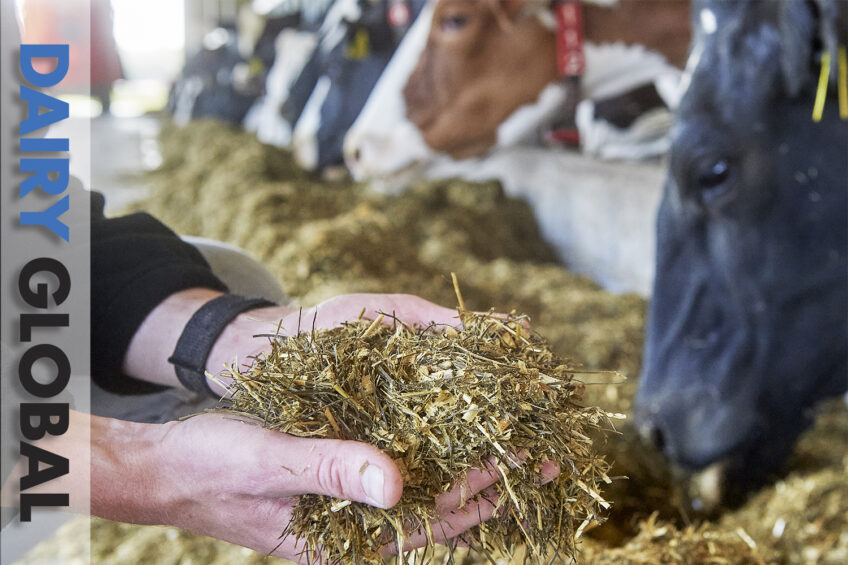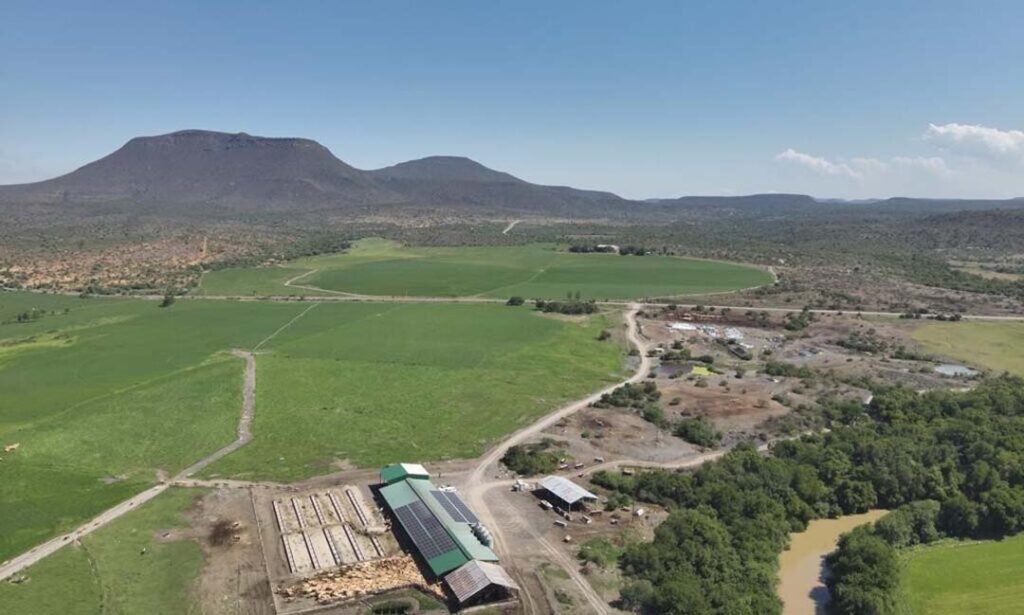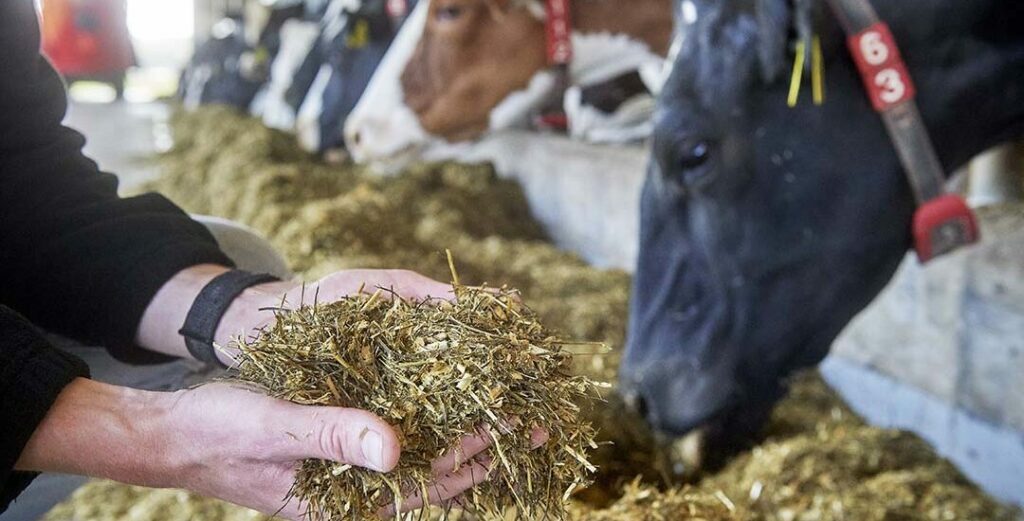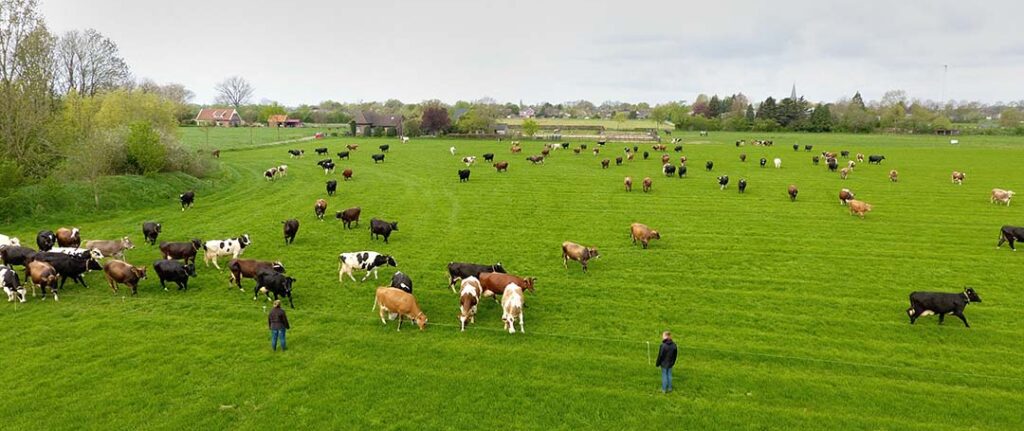Magazine edition 5: A focus on dairy cow nutrition

Feed is a major cost on-farm and in this edition we look at ways to save on feed costs and minimise expenses. In addition, we explore silage intake and ways to improve and forage management. We also go to the US where we take a look at how the country is going greener, what it entails, and what strategies are in force. Check out magazine edition 5 now!
How is dairy in the US going greener?
The US has made major progress in its sustainability efforts. For the same volume of milk, 30% less water and 21% less land was used along with a 19% smaller carbon footprint in 2017 compared to 2008. But what is behind these achievements? A Rabobank report explores the strategies, approaches and goals in the sector. Here, a summary of the recent report, US dairy’s journey toward meeting sustainability goals.

Re-evaluating calf nutrition for long-term benefits
New Australian research looks at the nutrition a calf receives early in its life and the positive influence on overall health and resilience as it grows and gets ready to join the milking herd. University of Melbourne PhD candidate Emma Ockenden has spent the last 3 and a half years examining the impact of 2 different feeding strategies on calf immune responses pre-weaning and post-weaning.
Striving for balance for high milk production
The warm climate in Weenen, South Africa, means pasture growth is quick and ample. Managing heat stress, however, along with other typical challenges of this region, requires thoughtful stewardship. The Foundation Farm dairy is a green oasis in an over-grazed landscape in the KwaZulu-Natal province. With an average rainfall of around 700 mm per year, the natural pasture could provide ample food for livestock. But without careful management the land can become barren, as dairy farmer Barry Schiever has witnessed.

This is not (yet) silage-making season, but…
Every so often, dairy producers experience that something has gone wrong in silage fermentation at the time of opening the bunker. So, even though it may not be the time of the year you are particularly worried about silage making, it may be time to prepare yourself in the event you experience some unpleasant surprises as you start feeding the newly-harvested crops.
Improve silage intake: What to consider
This article examines some of the nutrition, disease and production problems associated with silage feeding. The strategies to be adopted for improved utilisation of the silage are also discussed. Intake of silage dry matter is usually lower than that of the corresponding fresh crop (i.e., silage intake is about 27% less than intake of the same forage fed without ensiling). The presence of fermentation end-products, such as organic acids, ammonia and amides, may limit the intake of silage due to reduced palatability and inhibition of rumen motility.
Ways to optimise forage management
When discussions arise about the ways to save costs for dairy herd management, altering feed and nutrition are almost always mentioned. This is a natural place to look because feed accounts for the biggest chunk of farm expenses. Usually, farms change their rations by looking for certain ingredients they can stop purchasing. But a healthy rumen requires high-quality forage that cannot be cheapened or reduced. Farmers would benefit from looking internally and determining the best ways to enhance what they already have rather than avoiding a purchase altogether.

Do trace minerals have a role in improving sustainability?
Countless articles over the past 50-plus years have shown the importance of a quality trace mineral programme in maintaining optimised dairy cow productivity and health. But what role can trace minerals play as we work to reduce a dairy cow’s carbon footprint? Before we dig into that question, it is important to mention that achieving mandated, animal nutrition sustainability objectives requires a team effort by all members of the dairy nutrition supply chain.
Net zero on-farm: A hot topic in the UK
The benefits of achieving net zero on farms was at the centre of the ‘Carbon Talks’ discussions at the 2023 Dairy Show at Shepton Mallet, UK. Learning about how farms can reach net zero through reducing and offsetting was a key element of the seminar programme. Dr Hannah Jones, carbon and soils adviser with Farm Carbon Toolkit, spoke of the 5-year lottery-funded project in Cornwall involving 43 farms, which runs until 2026. The aim is for 40 of these to reduce their carbon footprint by 30% over 5 years and for the remaining 3 to eliminate their emissions.
Cow personality and adaptation to AMS
A new study published in the Journal of Dairy Science indicates that personality traits of dairy cows are associated with adaptation and performance in an automatic milking system. The study highlights which personality traits are consistent across the transition period. Dairy cows undergo an adaptive period during changes to a new milking system, such as an automatic milking system (AMS). During this period, they can experience stress, affecting their health and productive performance. How cows cope with this period depends on their individual characteristics or personalities.
Grazing dairy cows on temperate pastures
Dairy farmers around the world use pasture as a primary feed source, and grazing plays a central role in milk production. Here we take a look at some challenges for the grazing cow, along with opportunities for future improvement. A major challenge in pasture management is maintaining a constant daily supply of dense herbage with relatively high dry matter and energy density during the grazing season despite variations in forage growth rate due to season, temperature, water and nutrient supply.

Join 13,000+ subscribers
Subscribe to our newsletter to stay updated about all the need-to-know content in the dairy sector, two times a week.










